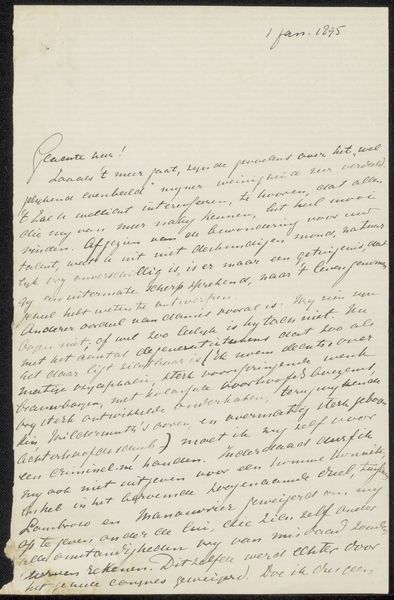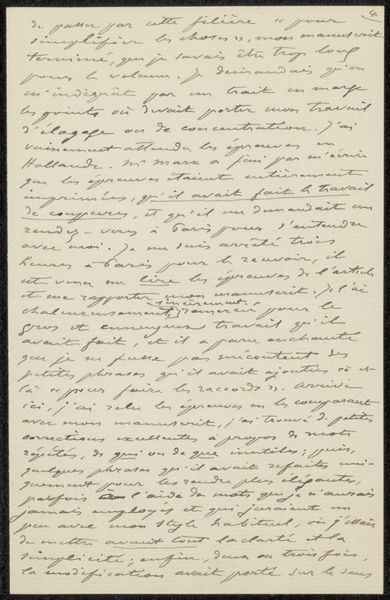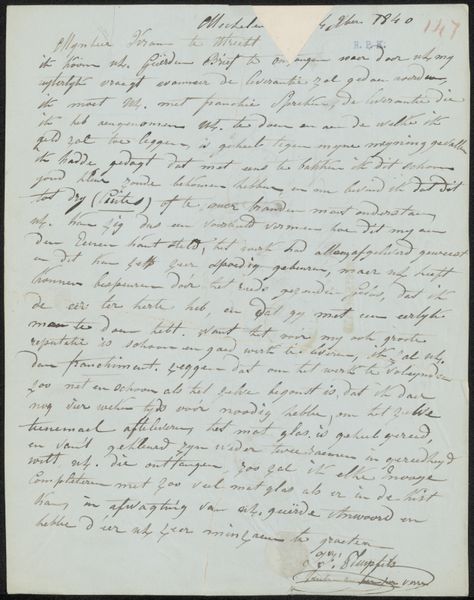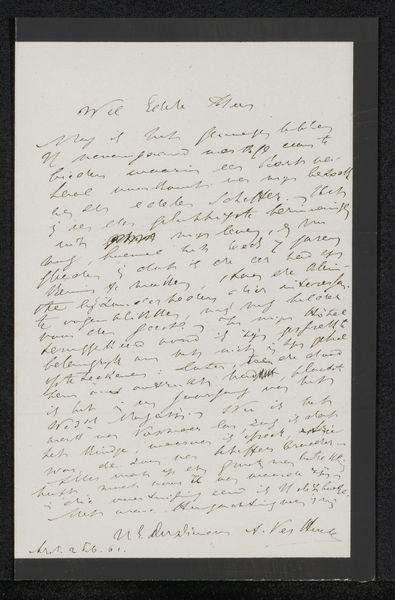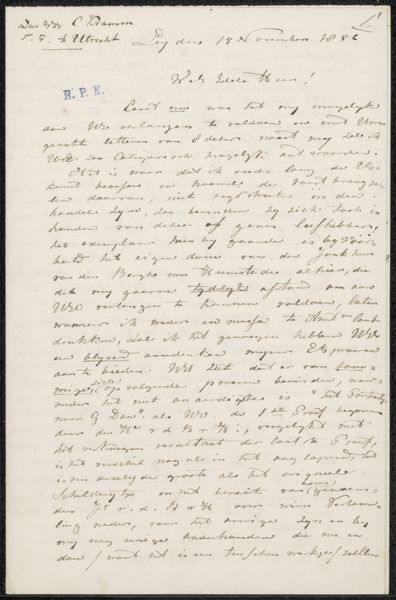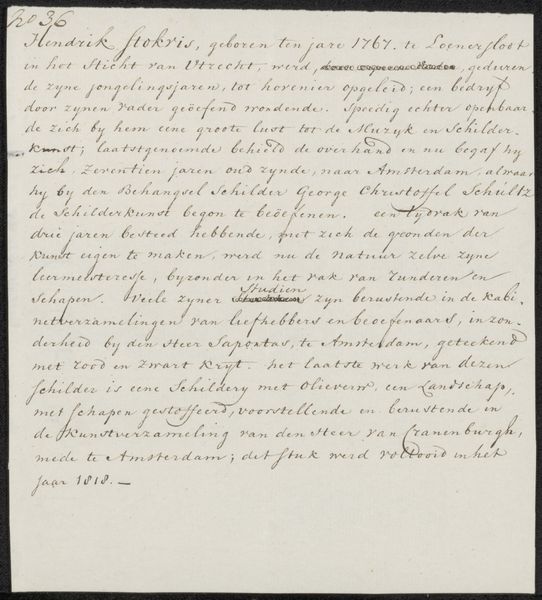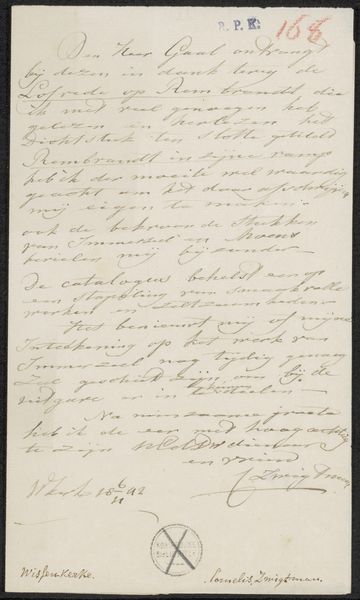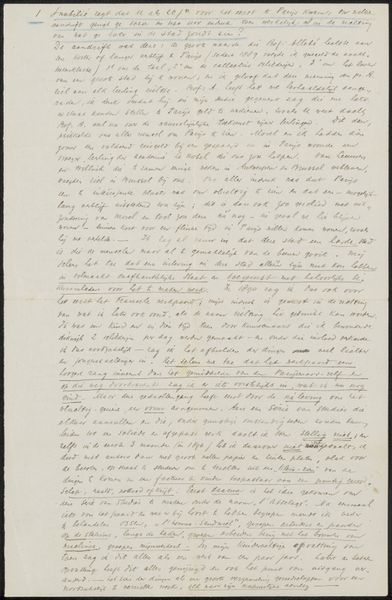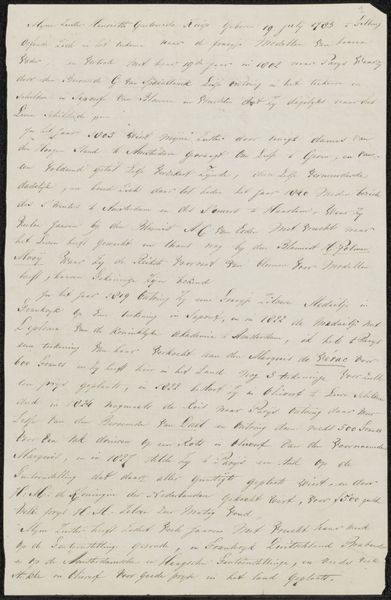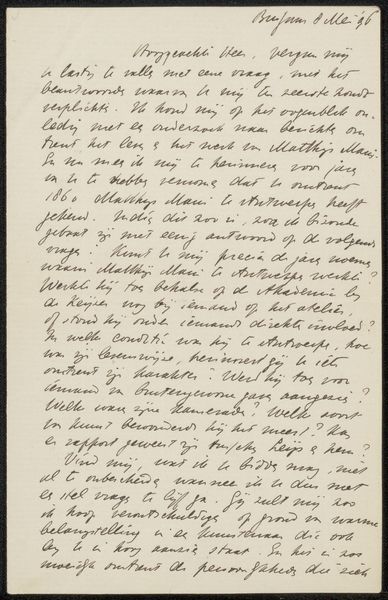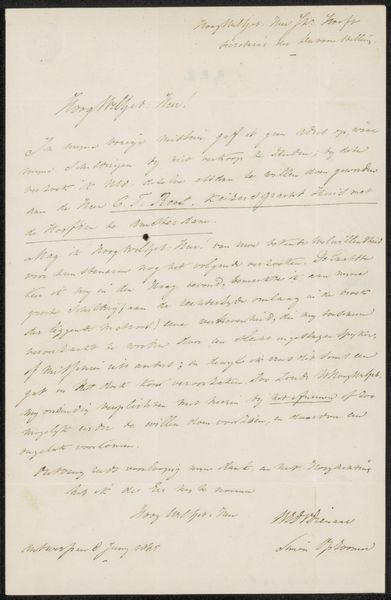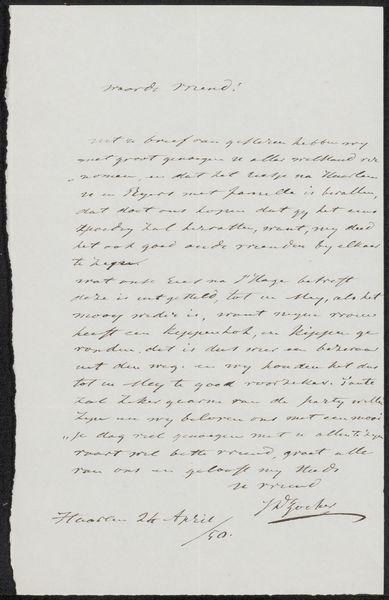
drawing, paper, ink
#
portrait
#
drawing
#
paper
#
ink
#
modernism
Copyright: Rijks Museum: Open Domain
Editor: So, here we have Chap van Deventer’s “Brief aan Jan Veth,” possibly from 1886, done in ink on paper. It’s literally a letter. What I find striking is the density of the handwriting, how every bit of the paper is covered. It makes it feel so intimate, like eavesdropping on a private conversation. What do you see in this piece? Curator: What immediately jumps out is the interplay between text and image. We tend to think of letters as purely communicative, vessels for information. But here, the very act of writing, the *visual* presence of the handwriting, takes on a symbolic weight. Consider the historical context: before typewriters were ubiquitous, handwriting carried so much more personal and social information. Think of how signatures were read, and the status they afforded. Can we not regard this letter almost as a coded portrait of both writer and receiver? Editor: A coded portrait, interesting! In what way? Curator: Well, handwriting was once seen as a direct expression of one’s personality, character, even social standing. The slant, the pressure, the loops – these were all interpreted as clues. Now, this letter is addressed to Jan Veth, himself an artist and critic. I wonder if van Deventer was deliberately crafting his handwriting, conscious of how Veth, with his discerning artistic eye, might “read” him through his script. Consider too, the date written above, near illegible—how are we meant to interpret this deliberate visual decision to conceal? Editor: That gives me a lot to think about, about how communication is a visual symbol and performance. Curator: Exactly, and thinking about this redefines the way one considers their contemporary writing in an era where letters have become less popular.
Comments
No comments
Be the first to comment and join the conversation on the ultimate creative platform.
